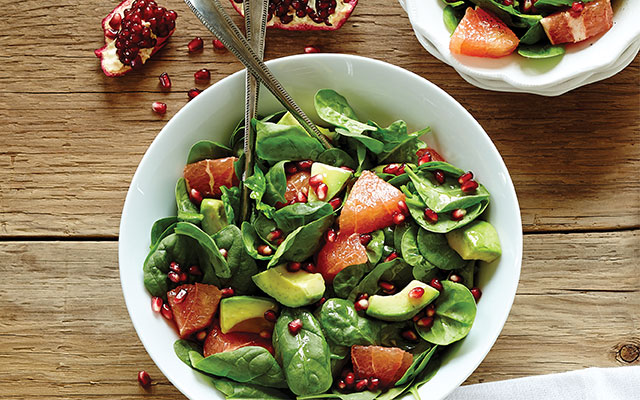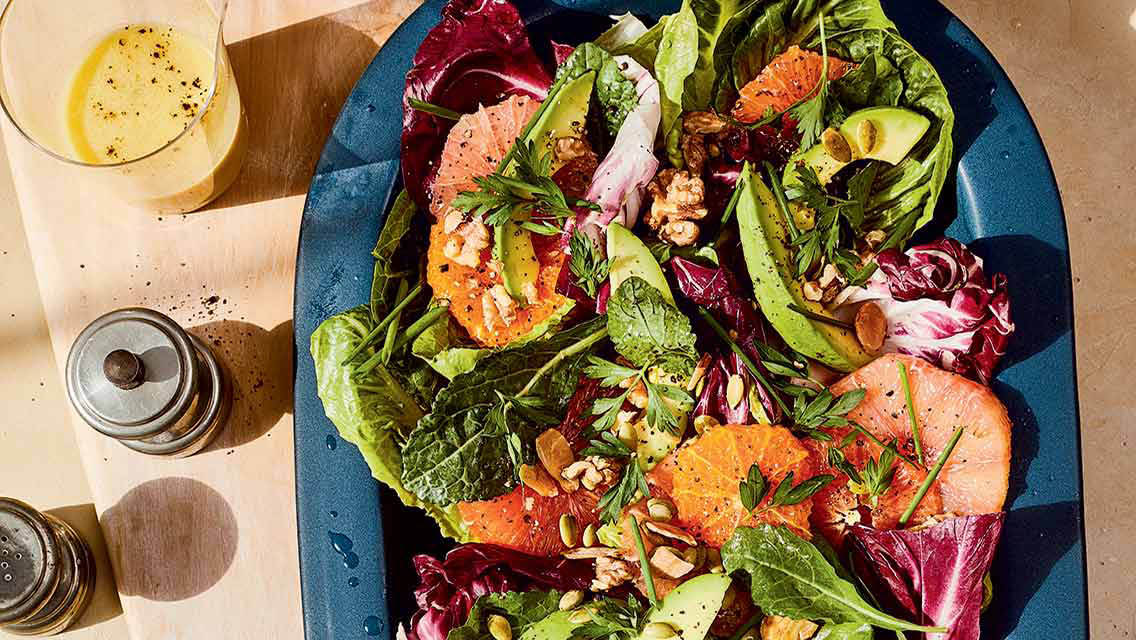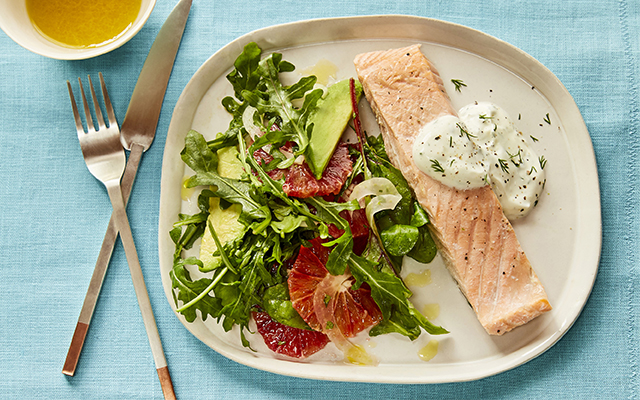Ranging across a spectrum from yellowish-white to the palest of pinks to rich salmon reds, grapefruits are a hybrid that appeared on the scene relatively recently, sometime around the 17th or 18th century, in Barbados. Although most orange subtypes are the product of deliberate crossing, the grapefruit is likely a wild crossing, a happy accident of nature and the haphazard planting of citrus trees in the West Indies.
Sweet, tart, and a little bitter, grapefruits are refreshing on their own, and they liven up a range of dishes. Red and pink varieties contain carotenoids including beta-carotene, lycopene, lutein, and zeaxanthin. These not only give the fruits their intense color but also support eye health and protect the body from free radicals.
Along with certain orange cultivars like Seville oranges and pomelos, grapefruits contain furanocoumarins. But beware: In grapefruits, concentrations are high enough to disrupt the function of certain drugs. If you’ve ever seen the words “Do not take with grapefruit” on a medication label, this is because of furanocoumarins.
“Furanocoumarins block an enzyme produced by the liver and intestines to break down certain medications in the body,” Lockhart explains. “This results in the body absorbing more medication than it should,” which increases the risk of overdose and adverse side effects.
That’s really the only situation in which grapefruit is best avoided. The myriad benefits of these nutrient-dense fruits can be enjoyed several ways.
Try this:
- Slice in half crosswise, segment, and scoop out with a spoon, or peel, separate into segments, and eat it as you would an orange.
- Roast grapefruit to caramelize the sugars and highlight the fruit’s sweetness.
- Add grapefruit to salads with avocado; they’ll complement the avocado’s creaminess.
- Include grapefruit in quinoa bowls or your morning oatmeal — the extra fiber may help moderate your insulin response to the grains.
- Add grapefruit to Greek yogurt, chia-seed pudding, or homemade granola for a hearty breakfast.
- Save and dry those peels! A little grapefruit peel adds a citrusy pop to virtually any dish.
Nutrient content per grapefruit: Fiber: 2.8 g • Sugar: 17.9 g • Vitamin C: 88 mg





This Post Has 0 Comments